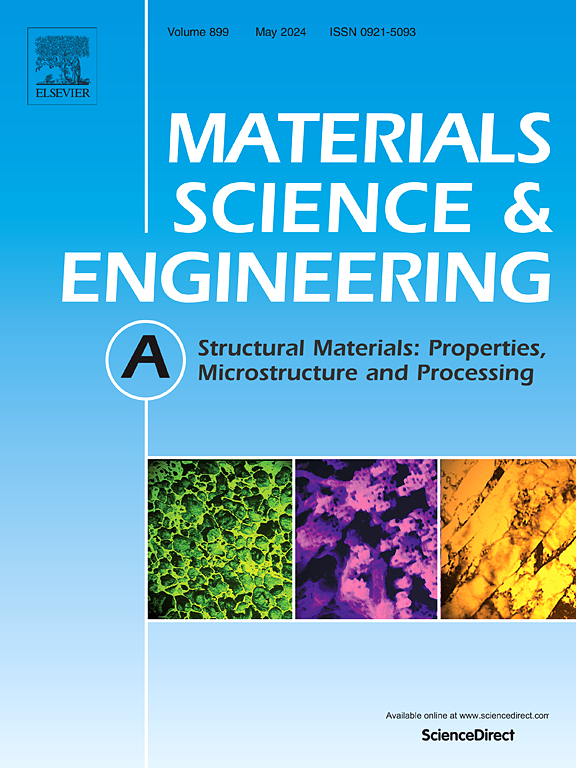Partially recrystallized 0000 microstructure enhanced strength-ductility synergy in a single phase Co35.5Ni35.5Cr10Fe10Mo9 multi-principal element alloy
IF 6.1
2区 材料科学
Q1 MATERIALS SCIENCE, MULTIDISCIPLINARY
引用次数: 0
Abstract
The CoCrFeNi multi-principal element alloy (MPEA) is well known for its remarkable ductility; however, its low room-temperature strength limits its broader practical applications. In this study, a partially recrystallized heterostructure single-phase Co35.5Ni35.5Cr10Fe10Mo9 alloy was developed. This alloy was engineered through the doping of molybdenum (Mo), an element with a larger atomic radius, in combination with a heterostructure strategy. The alloy exhibits both high yield strength (1131 MPa) and excellent ductility (23.6 %) at room temperature, showcasing a balanced enhancement of strength and ductility. Such exceptional properties of this alloy are attributed to the synergistic effects of several mechanisms, including stacking fault networks, Lomer-Cottrell dislocation locks, deformation twinning-induced plasticity, and heterogeneous deformation-induced hardening. These mechanisms work together to enhance strain-hardening during tensile deformation. This study highlights the potential of utilizing partially recrystallized heterostructures as means to optimize the mechanical properties of MPEAs.
部分再结晶的0000组织增强了单相Co35.5Ni35.5Cr10Fe10Mo9多主元素合金的强度-塑性协同作用
CoCrFeNi多主元素合金(MPEA)以其优异的延展性而闻名;然而,其较低的室温强度限制了其广泛的实际应用。本研究制备了部分再结晶的异质组织单相Co35.5Ni35.5Cr10Fe10Mo9合金。这种合金是通过掺杂钼(Mo)来设计的,钼是一种具有更大原子半径的元素,结合异质结构策略。该合金在室温下具有较高的屈服强度(1131 MPa)和良好的塑性(23.6%),表现出强度和塑性的平衡增强。这种合金的这种特殊性能归因于几种机制的协同作用,包括层错网络、lomo - cottrell位错锁、变形孪晶诱导塑性和非均质变形诱导硬化。这些机制共同作用,增强拉伸变形过程中的应变硬化。这项研究强调了利用部分再结晶异质结构作为优化mpea力学性能的手段的潜力。
本文章由计算机程序翻译,如有差异,请以英文原文为准。
求助全文
约1分钟内获得全文
求助全文
来源期刊

Materials Science and Engineering: A
工程技术-材料科学:综合
CiteScore
11.50
自引率
15.60%
发文量
1811
审稿时长
31 days
期刊介绍:
Materials Science and Engineering A provides an international medium for the publication of theoretical and experimental studies related to the load-bearing capacity of materials as influenced by their basic properties, processing history, microstructure and operating environment. Appropriate submissions to Materials Science and Engineering A should include scientific and/or engineering factors which affect the microstructure - strength relationships of materials and report the changes to mechanical behavior.
 求助内容:
求助内容: 应助结果提醒方式:
应助结果提醒方式:


